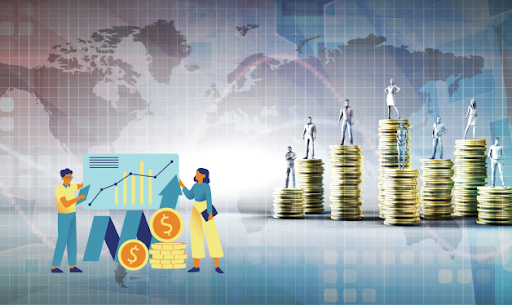When staff members feel appreciated, the dynamics shift. Office morale isn’t an esoteric measure, but a direct connection to your business’s bottom line through productivity, retention, and creativity. Yet many organizations fail to execute strong recognition strategies that really speak to their employees.
As Gallup research has found, employees who are regularly recognized are four times more likely to be actively engaged at work compared to those who aren’t. This stresses how important employee recognition is for building a successful workplace. Workers today are no longer satisfied with just a salary, they want to believe that their efforts make a difference.
Let’s dive into these 10 proven methods that change workplace culture through genuine recognition.
Thoughts Behind Employee Recognition
Before looking at particular strategies, it’s worth considering why recognition is effective on such a basic level. When workers receive a genuine acknowledgement, their brains release dopamine, the “feel-good” neurotransmitter linked to motivation and gratification. This chemical response establishes a positive connection with work and encourages behaviors that are recognized.

Research repeatedly demonstrates that recognition impacts directly on performance. Aides who feel valued come to the workplace with up to 21% increased productivity and are much more likely to remain with their company over the long term.
Employee recognition gratifies fundamental psychological needs for belongingness, esteem, and self-actualization within the workplace setting. Such satisfaction leads to greater emotional commitment to the job and firm.
One of the good strategies is celebrating individual milestones that can greatly boost team cohesiveness and individual satisfaction. https://www.kudoboard.com/cards/online-birthday-cards/ enables teams to make joint, individualized e-cards where team members can add messages, images, and videos. With a digital solution ensures that every team member, regardless of location, can participate in the celebration, making the recipient feel valued and appreciated.
Strategy 1: Design a Multi-Faceted Recognition Framework
A comprehensive recognition approach addresses different achievement types and personal preferences. One-size-fits-all recognition misses the mark for many employees. Create both formal recognition programs for major achievements and channels for spontaneous appreciation. This combination ensures all contributions, large and small, receive acknowledgment.
Integrate recognition touchpoints throughout the employee journey, from onboarding celebrations to career milestone acknowledgments. Using employee recognition software helps track these milestones automatically, ensuring no opportunity for appreciation is missed.
Develop recognition strategies that scale appropriately to match achievement levels. A small project completion might warrant a team shout-out, while exceeding yearly targets could merit more substantial recognition.
With a flexible framework in place, you’ll be ready to leverage technology to amplify your recognition efforts across the organization.
Strategy 2: Leverage Digital Recognition Platforms
Modern technology has revolutionized how we deliver recognition, making it more accessible, visible, and impactful than ever before. The best employee recognition software includes social recognition capabilities, reward management, analytics, and integration with existing workplace tools.
Look for platforms that make recognition frictionless. Digital platforms remove hierarchical barriers, enabling peer-to-peer recognition that creates a culture where appreciation flows in all directions. This democratization amplifies recognition’s impact throughout the organization.
Technology provides valuable insights into recognition patterns, helping identify both recognition champions and areas where appreciation may be lacking. These insights drive continuous improvement of your recognition strategy. Digital recognition tools set the foundation, but personalization ensures that recognition resonates deeply with each recipient.
Strategy 3: Personalize Recognition to Individual Preferences
Recognition is equitable. What energizes one employee might embarrass another, making personalization crucial. Survey your team about how they prefer to be recognized. Some value public praise while others appreciate private acknowledgment; some want tangible rewards while others prefer experiential ones.
Recognition preferences often vary across different demographics. Awareness of cultural norms and generational differences helps ensure your recognition lands as intended and feels authentic to recipients.
Develop profiles for different employee personas to guide managers in delivering appropriate recognition. These maps help prevent mismatches between recognition style and employee preference. Personalization makes recognition meaningful, but aligning it with your company values gives it strategic impact.
Strategy 4: Connect Recognition to Core Values
Value-aligned recognition reinforces what matters most to your organization while making appreciation more meaningful. Create recognition categories that directly reflect your core values. When recognizing employees, explicitly connect their actions to these values to reinforce their importance.
During organizational transitions, using workplace morale improvement strategies that highlight value-aligned behaviors helps maintain cultural continuity and reduces uncertainty. Recognition becomes an anchor during turbulent times.
Track which values receive the most recognition to identify both cultural strengths and areas needing reinforcement. This data provides valuable insights about how your values live in daily practice. When recognition aligns with values, it becomes a powerful cultural reinforcement tool.
Strategy 5: Implement Peer-to-Peer Recognition Systems
While manager recognition matters, colleague appreciation often carries special significance. Peer recognition feels authentic and creates community. Peer recognition captures contributions managers might miss and builds stronger team bonds. It also distributes the responsibility of recognition beyond leadership.
Create accessible channels for peer recognition using online birthday cards and digital appreciation platforms. The easier you make it to share appreciation, the more prevalent it becomes.
When peers publicly recognize each other’s contributions, it creates positive social proof and encourages others to participate. This visibility accelerates culture change. Peer recognition builds community, but celebrating personal milestones shows you value the whole person.
Strategy 6: Celebrate Personal Milestones Beyond Work Anniversaries
Recognizing personal achievements demonstrates that you value employees as whole people, not just for their professional contributions. Create traditions for acknowledging important life events like educational accomplishments, new homes, or new family members. These personal touches strengthen the bond between employee and organization.
Develop unique ways to celebrate significant moments that reflect your company culture. Consistency in these celebrations creates anticipation and demonstrates genuine care.
Respect boundaries while still acknowledging the human side of work. Let employees guide how much personal information they want to share and how they’d like it celebrated.
Personal recognition builds deeper relationships, but timing matters too.
Strategy 7: Establish Immediate Recognition Practices
Recognition loses impact when delayed. Real-time appreciation reinforces positive behaviors immediately and powerfully. When recognition follows closely after the achievement, the connection between action and appreciation is strongest. This immediate feedback loop powerfully reinforces desired behaviors.
Train managers to prioritize on-the-spot recognition and remove procedural obstacles that delay appreciation. Employee appreciation programs should include tools that facilitate instant recognition.
Implement technologies and practices that enable immediate acknowledgment, whether through digital platforms, recognition cards, or quick team celebrations. Immediate recognition reinforces behaviors, but meaningful rewards elevate their impact.
Strategy 8: Develop Meaningful Rewards That Drive Engagement
While verbal recognition is powerful, thoughtful rewards can amplify its impact and create lasting memories. Move past generic gift cards toward meaningful experiences, development opportunities, and personalized gifts. Consider what will create lasting positive memories rather than temporary satisfaction.
Connect rewards to professional growth by offering learning opportunities, conference attendance, or mentorship sessions as recognition. These rewards deliver dual benefits of appreciation and development.
Meaningful recognition doesn’t require large budgets. Employee recognition ideas can include visibility opportunities, special projects, or flexible work arrangements that cost little but mean a lot. Rewards matter, but leadership commitment drives cultural change.
Strategy 9: Train Leaders in Recognition Excellence
Leaders set the tone for recognition of culture. Their consistent participation signals its importance to the entire organization. Train managers in timely, specific, and appropriate recognition. Teach them to observe contributions, understand individual preferences, and deliver meaningful appreciation.
Address common obstacles like discomfort with praise, concerns about favoritism, or time constraints. Provide scripts, reminders, and easy methods to make recognition manageable.
Set recognition expectations for leaders and measure their follow-through. Include recognition activities in performance evaluations to reinforce their importance. With leaders modeling the way, establishing recognition rituals reinforces your culture.
Strategy 10: Create Recognition Rituals and Traditions
Consistent recognition rituals reinforce your values and create a sense of belonging and tradition within your organization. Create distinctive recognition events that become part of your company identity. Whether weekly team shout-outs or annual celebration events, these rituals become anticipated traditions.
Keep recognition fresh while maintaining enough consistency that employees know what to expect. Refresh approaches periodically while preserving the core recognition philosophy.
Share recognition stories widely to create organizational legends that reinforce your values and inspire others. These stories become powerful cultural artifacts. Recognition rituals build culture, but acknowledging well-being goes further.
Building a Recognition-Rich Culture
Effective appreciation for employees is something you must keep up over time, as it shows you value them. Using these strategies can help you create a culture where people feel recognized, remain motivated, remember important things and perform well.
Look at what encourages your workers and manage them accordingly, aligning your plans with your company’s vision.
Always remember that recognition helps express the important values and behaviors that are needed for your organization’s growth. Valuing employees helps them to contribute their greatest efforts to their work each day.
Your Questions About Employee Recognition
How Does Recognition Change Workplace Morale?
Workplace recognition encourages, creates a feeling of achievement and makes workers feel appreciated for what they do. Not only does recognition enhance individual employee motivation, but it has also been shown to enhance productivity and commitment to the company, resulting in greater retention.
What Are The Most Economical Recognition Strategies?
The least expensive and most effective reward options are personalized notes, public recognition in meetings, special project assignments, flexible scheduling, and peer recognition programs. These cost little but deliver significant morale benefits by showing authentic appreciation for specific contributions.
How Frequently Should Recognition Happen?
Regular, timely recognition works best, don’t save it for annual reviews or major milestones. Aim for weekly acknowledgment of contributions, with a mix of immediate appreciation for specific achievements and scheduled recognition for consistent performance and work anniversaries.









